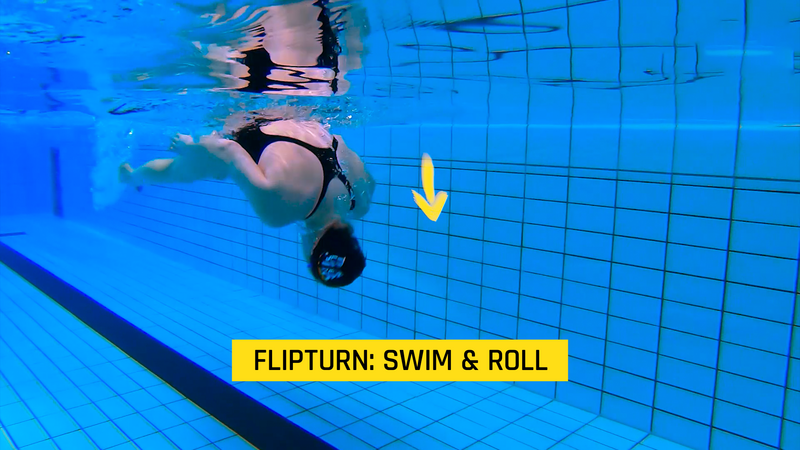Swimming blog - TURNS 4 ways how flipturns can benefit your swimming
There are different opinions on flipturns. Some see them as a pain, some as a rest stop. We see them as a necessity. They tell us a lot about staying relaxed, timing, coordination, breathing and core strength. They are an essential part of swimming like a pro. In short, they are good for you and we will exactly tell you why.
It's faster
Doing a flipturn will make you swim quicker. There is no doubt that doing a flipturn is faster than an open turn. You take more speed with you in the turn and can therefore easily maintain a higher speed while swimming.
Benefits breathing
Flipturns help improve your breathing and staying relaxed as the flipturn restricts your breathing. We have to learn to stay calm. Take a last breath just before the wall, blow a little out through your nose while turning (to avoid water coming up your nose) and then gently breathe out when you push off the wall. This will help you stay relaxed in the turn and enable you to continue swimming without feeling exhausted.
Start our 4 week Flipturn Course and learn to flip like a pro!
Enhances coordination
Flipturns look deceptively simple, but they do require a good level of co-ordination. Take it step-by-step. Do one step at a time and you will see that this will help you execute a flipturn every time thereafter. Don’t be scared. People think they will bump their heads. You are more likely to bump your bum. Turn with conviction. Fake it till you make it is the best course of action when it comes to turns.
Improves body position
Turns improve our overall body position in the water due to the push off. To push off effectively from the wall after the turn, the core needs to be tight. It is the same movement as doing a squat. Do a squat at home and see that as you push up, your core tightens, otherwise you will fall over. The same applies here, if you don’t tighten your core, you will push off in all directions but straight. Because you are horizontal and almost weightless in the water, the brain does not automatically activate the core and it is something we need to think about and practise. We have many moments to practise this in a training, by pushing off in a tight streamline after every turn.
For triathletes too!
There is an ongoing debate whether or not it's useful for triathletes to learn the flipturn. There is indeed no need to know how to flipturn on race day, since the swimming course in triathlons does not incorporate flipturns. However, being able to flipturn is crucial in your training. Being able to flipturn will keep your average speed higher during your swim workouts and you can maintain your pace and rhythmn. Also taking the improvement in your breathing and body position into account - there is no excuse anymore to not flipturn.
Side note
Pool rules are crucial to be able to make your turns safely.. Always turn in the middle of the lane or slightly to the left-hand side. This keeps us safe from oncoming swimmers who also want to turn and allow us to easily swim on the right side after the turn. Don’t ever overtake at the turning point. Let quicker swimmers pass you. Don’t push off just before someone is going to turn. First wait for that swimmer and then push off behind them. Check out all our pool rules here.
To turn or not to turn, is not negotiable. Don’t ask what you can do for the flipturn but what the flipturn can do for you! Not able to flip yet? Our 4-week Flipturn Course will get you flipping in no time ;-)
